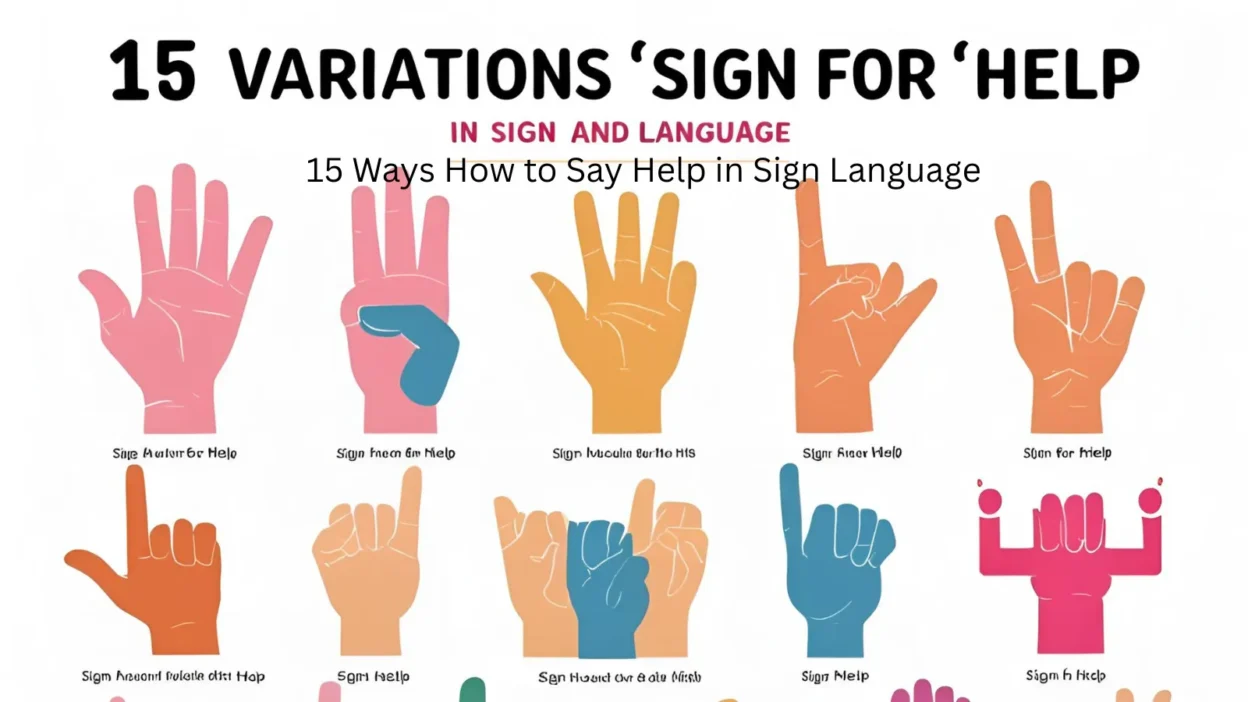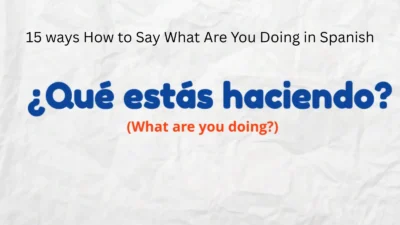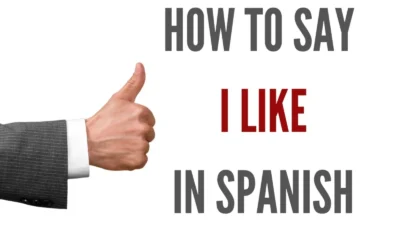Learning 15 ways how to say help in sign language can make your communication more inclusive, empathetic, and impactful. If you’re offering assistance, asking for support, or teaching someone in need, knowing how to sign help ensures your message is clear and respectful.
Sign language offers different variations and contexts for expressing help, from casual everyday situations to urgent emergencies.
In this guide, we’ll explore these 15 ways to say help in sign language so you can connect with Deaf and hard‑of‑hearing individuals with confidence and understanding.
Help in Sign Language:
Let’s explore 15 variations of saying help in sign language, complete with simple dialogue scenes, usage contexts, and some fascinating background behind each version.
1. Standard “Help” in ASL
How to Sign:
Make a thumbs-up with your dominant hand and place it on the open palm of your non-dominant hand. Then lift both hands slightly together.
Example:
👤 User A: (Signs) Help me, please.
👤 User B: (Signs) I’ll help you!
Origin:
This is the universal ASL sign for help, widely taught and understood in the Deaf community.
2. Help Me
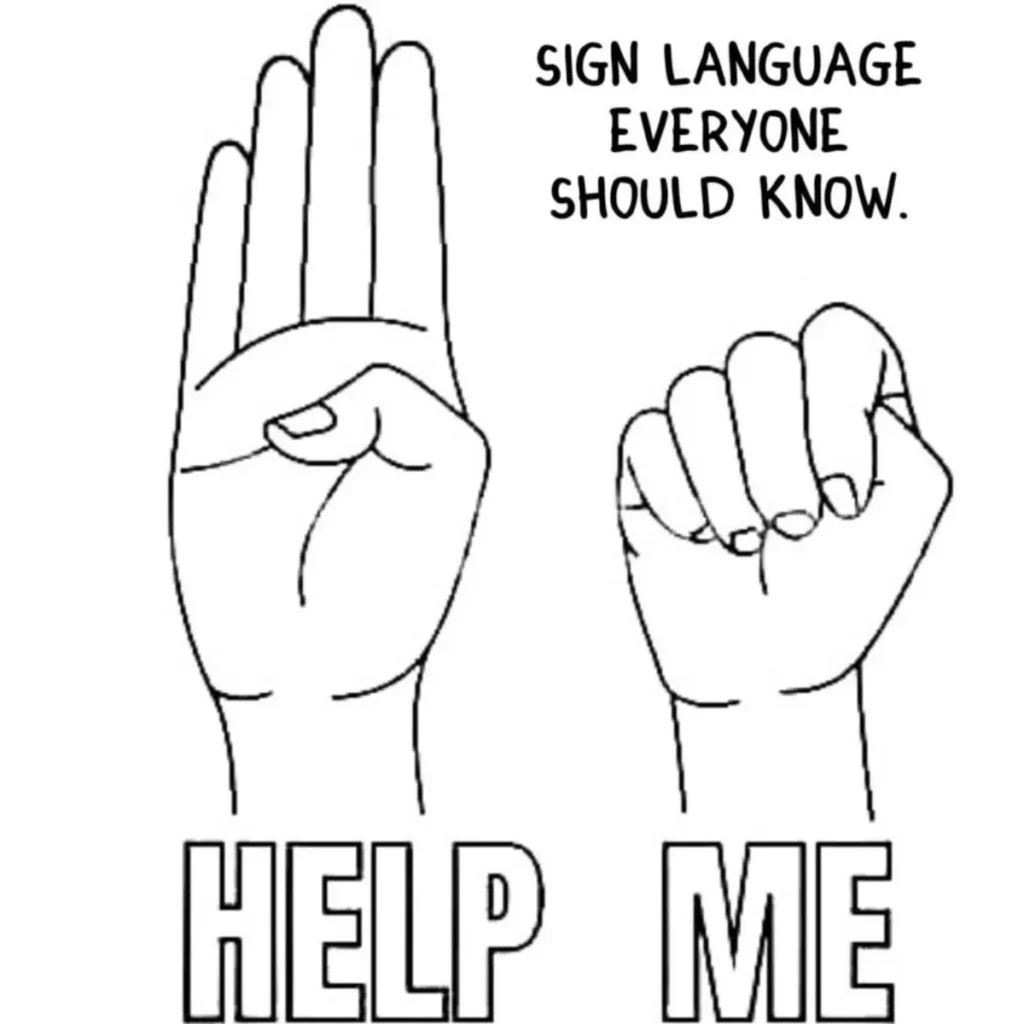
How to Sign:
Same sign as above, but move the sign toward yourself.
Example:
👤 User A: (Signs) Help me! (urgent expression)
👤 User B: (Signs) What’s wrong?
Use: Personal request for assistance.
3. Help You
How to Sign:
Do the “help” sign, then push it slightly toward the person.
Example:
👤 User A: (Signs) Can I help you?
👤 User B: (Signs) Yes, thank you.
Use: Offering help to someone else.
4. I Need Help
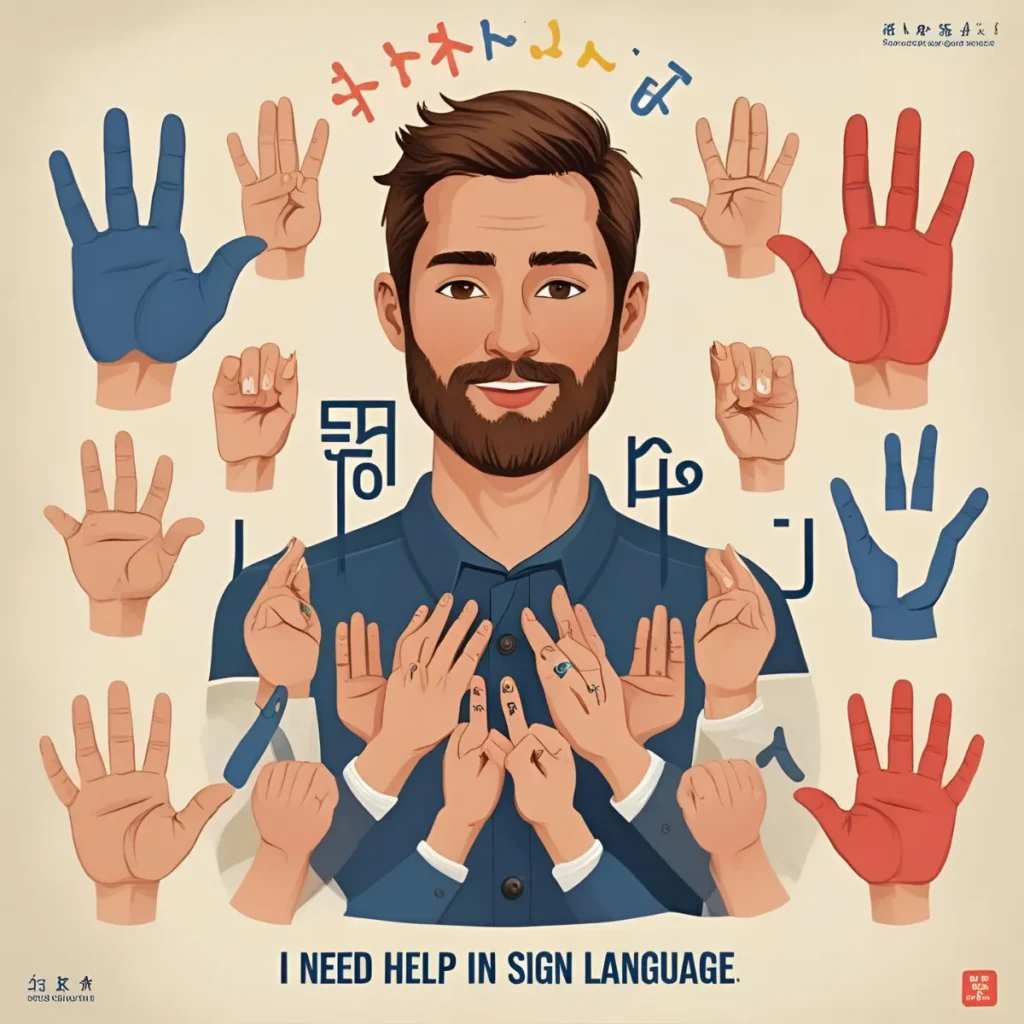
How to Sign:
Combine the sign for “I” (point to self), then “need” (hooked index finger pulling down), then “help”.
Example:
👤 User A: (Signs) I need help with this homework.
👤 User B: (Signs) Sure, let’s work on it together.
Use: Emphasizes urgency or importance.
5. Can You Help Me?
How to Sign:
Sign “can” (fists moving downward), “you” (point at person), “help” (thumbs-up on palm), “me”.
Example:
👤 User A: (Signs) Can you help me lift this box?
👤 User B: (Signs) Of course!
Use: Polite, everyday usage.
6. Please Help
How to Sign:
Sign “please” (flat hand circles on chest) + “help”.
Example:
👤 User A: (Signs) Please help, I’m lost.
👤 User B: (Signs) Let me guide you.
Use: Polite and respectful.
7. Help Right Now
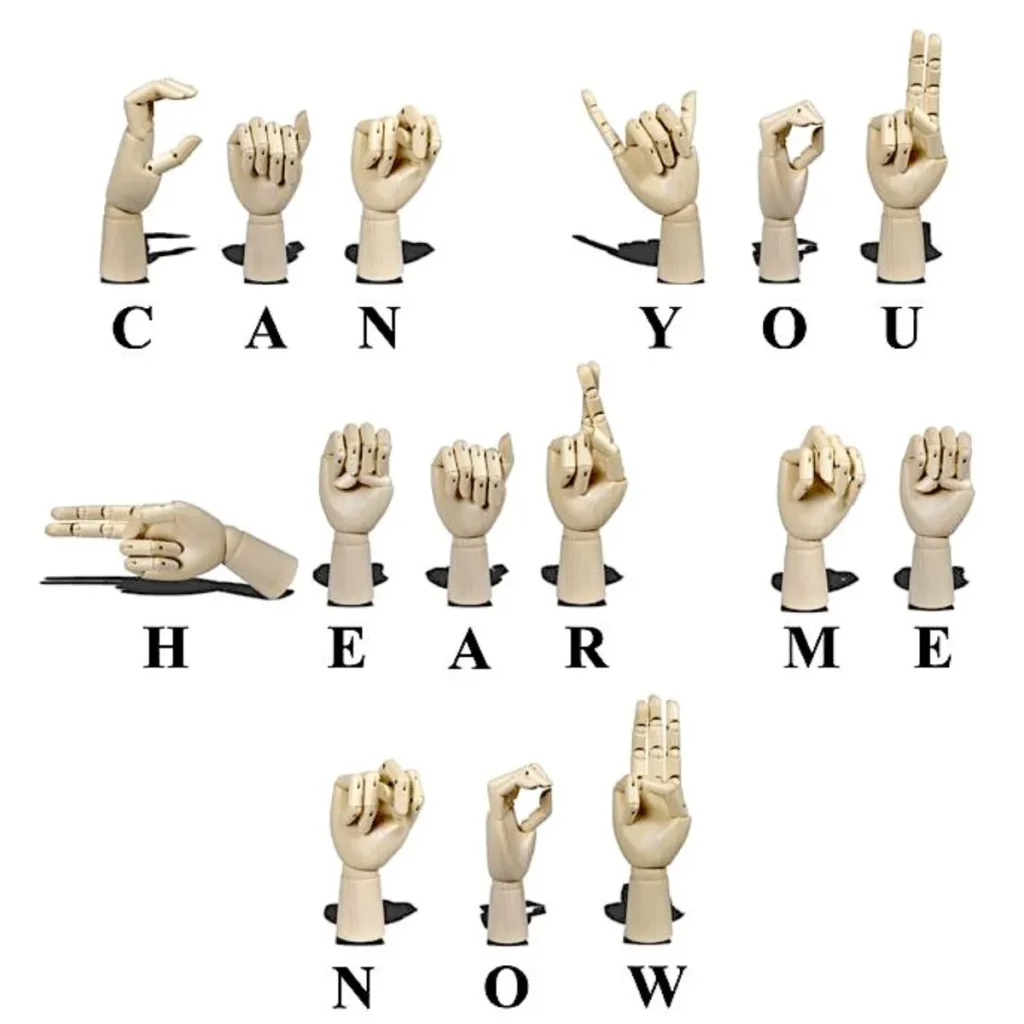
How to Sign:
Sign “help” + “now” (both hands down with palms up, moving slightly down).
Example:
👤 User A: (Signs) Help now! Fire!
👤 User B: (Signs) I’m calling for help!
Use: Emergency situations.
8. Do You Need Help?
How to Sign:
Sign “you” + “need” + “help” with raised eyebrows (question facial expression).
Example:
👤 User A: (Signs) Do you need help?
👤 User B: (Signs) Yes, please.
Use: When offering help proactively.
9. Helping Hand (Metaphoric/Visual)
How to Sign:
Mimic reaching out with one hand open—used informally or symbolically.
Example:
👤 User A: (Offers hand gesture)
👤 User B: (Nods and accepts help)
Use: Expressive, common in storytelling or theater.
10. Help Each Other
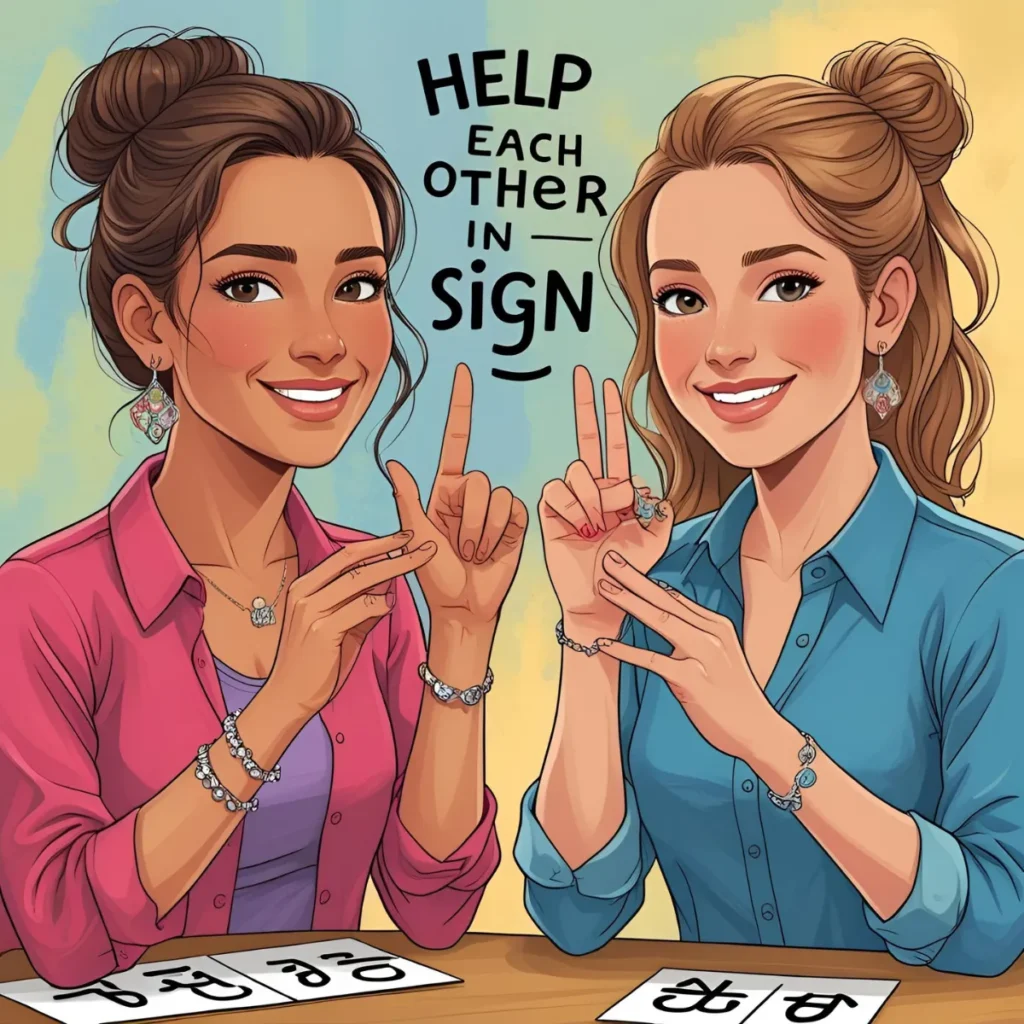
How to Sign:
Use the “help” sign with alternating directional movement between two people.
Example:
👤 User A: (Signs) Let’s help each other.
👤 User B: (Signs) Deal!
Use: Collaborative settings.
11. Medical Help
How to Sign:
Sign “doctor” (hand taps wrist pulse) + “help”.
Example:
👤 User A: (Signs) Doctor help me, please.
👤 User B: (Signs) Hold on. Help is coming.
Use: Healthcare or emergencies.
12. Emergency Help
How to Sign:
Sign “emergency” (letter “E” shakes slightly near shoulder) + “help”.
Example:
👤 User A: (Signs) Emergency help needed now!
👤 User B: (Signs) Stay calm, I’ll call 911.
Use: Urgent, life-threatening situations.
13. Assist (Formal Help)
How to Sign:
“Help” but in a more formal tone, often in interpreting or professional settings.
Example:
👤 User A: (Signs) May I assist you with this form?
👤 User B: (Signs) Yes, thank you kindly.
Use: Customer service, medical, or legal contexts.
14. Help Out
How to Sign:
Use “help” with expressive facial cues, and a motion showing action beyond the literal.
Example:
👤 User A: (Signs) Can you help out at the shelter today?
👤 User B: (Signs) Absolutely. Count me in.
Use: Volunteering or support roles.
15. Silent Signal for Help (non-ASL)
Origin:
Created during the COVID-19 pandemic and widely shared on social media. The hand signal involves showing the palm, tucking the thumb, and closing fingers over it. It indicates distress or abuse.
Example:
👤 User A: (Performs signal discreetly)
👤 User B: (Recognizes it and calls for help)
Use: Discreet call for help, especially in abusive or dangerous situations.
Conclusion:
Mastering 15 ways how to say help in sign language empowers you to assist, connect, and communicate with empathy. Whether in everyday conversations or urgent situations, knowing these signs helps you bridge the gap between spoken and signed communication.
By practicing and using these signs regularly, you not only improve your sign language skills but also show respect for Deaf culture and inclusivity. Remember — even a simple “help” signed with sincerity can make a meaningful difference.
